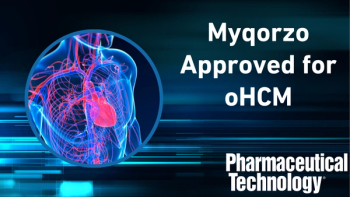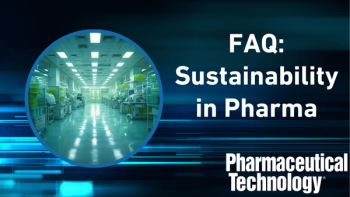
- Pharmaceutical Technology-11-02-2009
- Volume 33
- Issue 11
Whatever Happened to Classical Chemistry?
A recent book reminds readers that small-molecule chemistry has enabled advances in biotechnology.
The contributions of classical chemistry to biotechnology are sometimes forgotten, and its advances are less recognized than those of recombinant DNA technology for the production of therapeutic proteins. The hard work of thousands of scientists and researchers in the solution chemistry of proteins has quietly supported the evolution of biotechnology. Many advances in biotechnology were based on well-established principles of classical organic and inorganic chemistry. In Application of Solution Protein Chemistry to Biotechnology, Roger L. Lundblad provides a practical review of classical chemistry with specific examples of its most important accomplishments as they relate to biotechnology.
Application of Solution Protein Chemistry to Biotechnology, Roger L. Lundblad, CRC Press, New York, 2009, 456 pp., ISBN: 9781420073416
The first two chapters provide an in-depth review of the methods and approaches used to chemically modify proteins. The author also discusses the role that solution chemistry has played as an effective tool for studying protein structure and function. Lundblad reminds us that proteins are particularly challenging to modify in a controlled fashion because they are heteropolymers made up of multiple combinations of 20 amino acids linked by peptide bonds. Because of amino acids' complex higher-order structure, modifying them yields less predictable results and is a more empirical process than that for modifying simple organic polymers. Still, Lundblad points out that some basic rules of the road have been revealed. For example, "in general, changes that result in charge reversal [after the chemical modification of proteins] cause conformational changes."
For one interested in the development and manufacture of therapeutic proteins, protein stabilization, and protein-degradation pathways, the first two chapters are valuable for their broad overview of how chemical reagents can modify specific amino acids on proteins. These chapters provide the reader with a thorough review of the chemical modification of protein amino and carboxyl groups, csystine, tyrosine, methionine, tryptophan, arginine, and histidine residues. They also consider posttranslational modifications such as protein glycation.
The chapters also help the reader understand and control unwanted protein modifications, which result from analogous chemical reactions in vivo and during the production processes for recombinant proteins. Understanding these common chemical reactions is critical to the biotechnology industry because it must establish carefully controlled commercial production processes and avoid unwanted chemical modifications.
In the remaining chapters, Lundblad takes what he refers to as a "broad view" of the practical advances and contributions of classical chemistry to biotechnology. The chapters include a discussion of protein-surface immobilization, the production of protein conjugates, hydrogels, biogels, protein-based glues and adhesives, tissue soldering, drug delivery, and the chemical modification of proteins for therapeutic purposes.
Chapter four describes the important role that protein conjugates play in biotechnology. Lundblad reviews a large body of work that includes PEGylation and mineral-affinity labeling with thiol-labile disulfide linkages, as well as directed C-terminal and N-terminal conjugation. He describes several practical approaches to conjugating toxins, radioisotopes, and carbohydrates.
Chemical conjugation is proving to be an important tool to enhance the potency or pharmacokinetic properties of protein therapeutics. One of the most interesting examples is the growing use of antibody–toxin conjugates in cancer therapy. As Lundblad points out, antibody–toxin conjugates can use hydrazone, disulfide, or other chemical linkages. Well-controlled chemical methods now generate tailor-made antibody–toxin conjugates. The chemical approaches allow toxins such as doxorubicin to be delivered efficiently to a tumor cell, where they can be released in the oxidizing intercellular environment of the lysosome. Various toxin-conjugated antibodies are proving to be more efficacious than their nonconjugated counterparts and are being adopted as effective cancer treatments.
Application of Solution Protein Chemistry to Biotechnology educates the reader about the important role that classical organic and inorganic solution protein chemistry has played in biotechnology to date. In the preface, Lundblad states specifically that much of the information provided is not available in electronic format and thus is not easily accessible to researchers in this field. The book is written for scientists and researchers who study protein-solution chemistry and want to understand and use previous advances. Much of the information provided may help those interested in the field save time and avoid "reinventing the wheel," as Lundblad puts it.
The book itself is well researched; it contains more than 200 pages of valuable references, including a comprehensive index. The chapters are filled with detailed and useful summary tables and figures that include cogent descriptions of relevant chemical reactions. Educators will find useful information for lectures that require modern source material on this subject. Inventors or researchers exploring new directions in protein-solution chemistry to advance biotechnology will find that the carefully selected references and summary tables provide a solid starting point.
David Vetterlein, PhD, is the founder and principal consultant of Alliance BioProcess Consulting, 9620 146th Pl. SE, Snohomish, WA 98296, tel. 360.863.2937,
Articles in this issue
about 16 years ago
Sharing Supply-Chain Securityabout 16 years ago
Facing Realityabout 16 years ago
Changes for Better or Worseabout 16 years ago
Position Paper: Are We Abandoning IQ and OQ?about 16 years ago
Safety versus Speed in Drug Developmentabout 16 years ago
Insider Solutions: A New Direction for USP?about 16 years ago
DIY Healthcare Reformabout 16 years ago
Are We Abandoning IQ and OQ?about 16 years ago
Advancing Chiral Chemistry in API Synthesisabout 16 years ago
A Robust, Automated Karl Fischer Titration SystemNewsletter
Get the essential updates shaping the future of pharma manufacturing and compliance—subscribe today to Pharmaceutical Technology and never miss a breakthrough.




